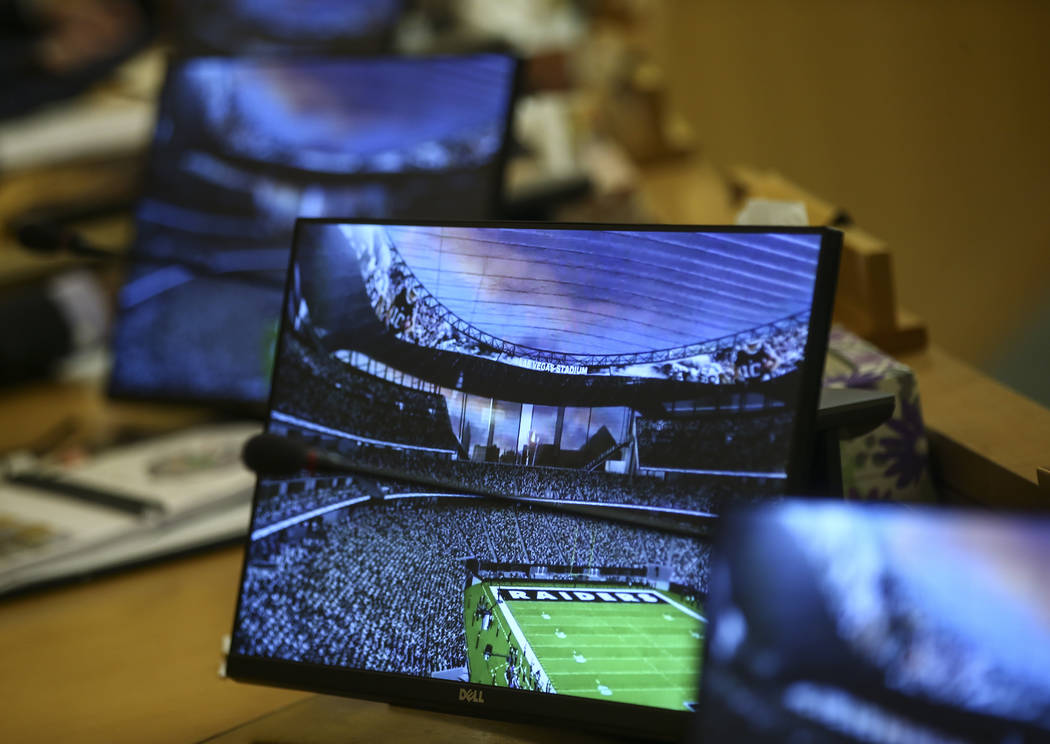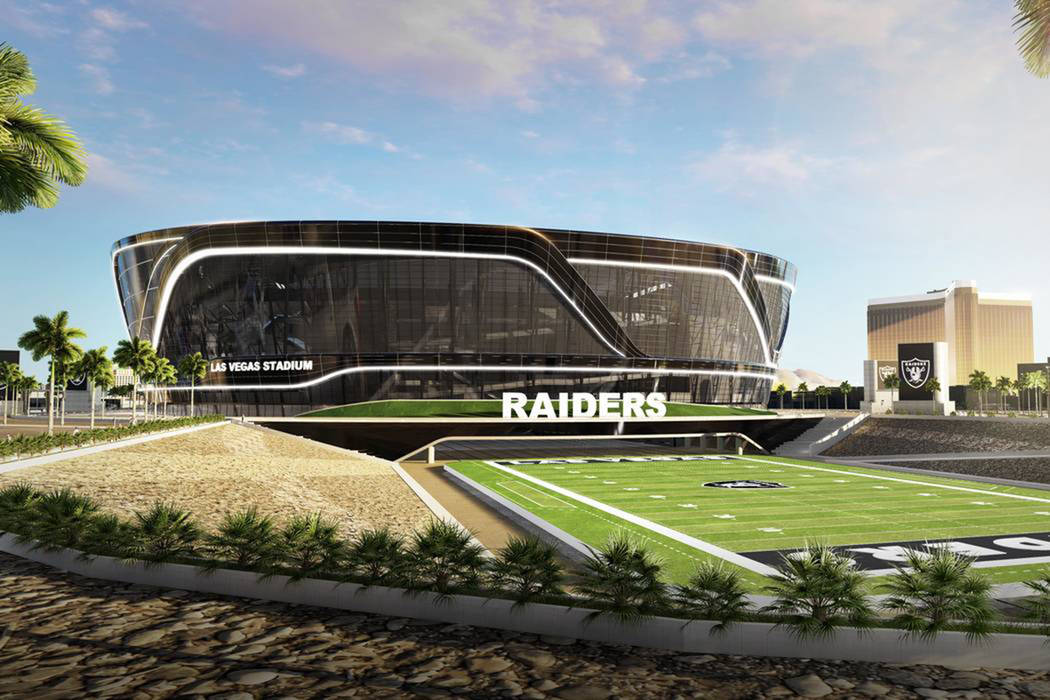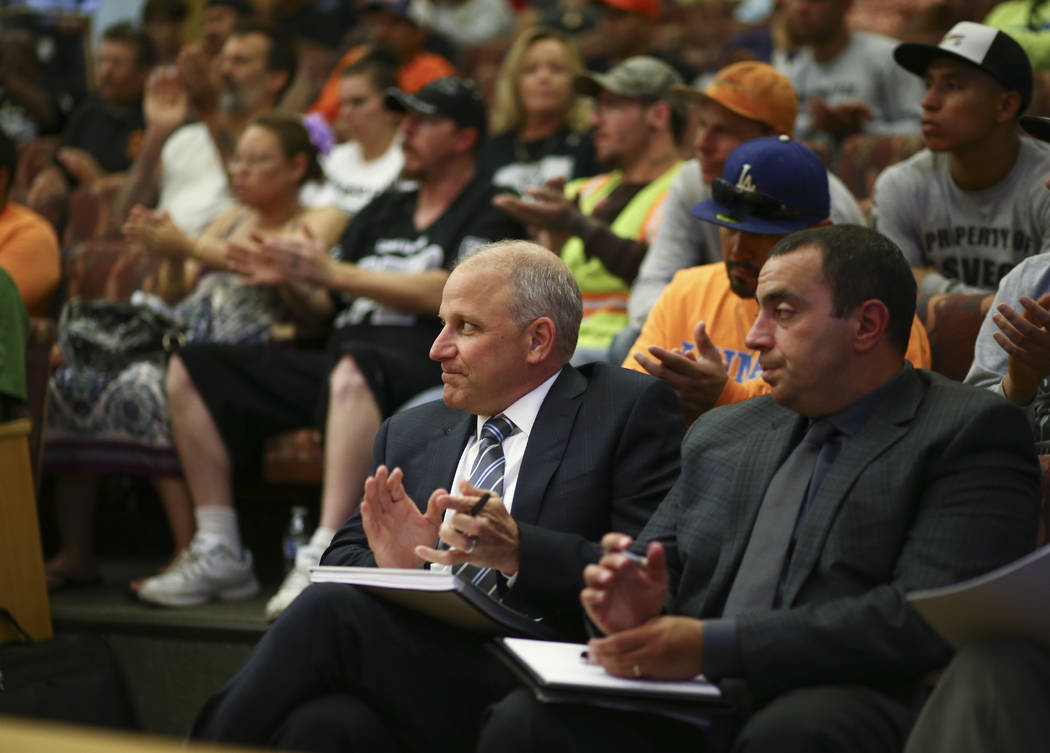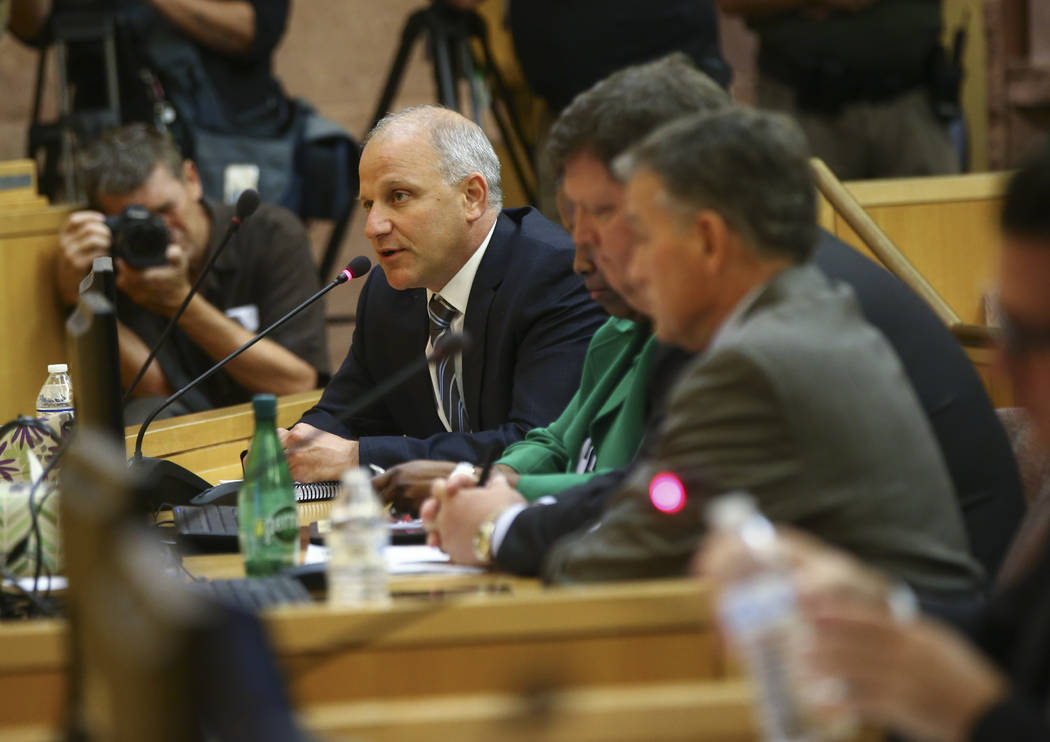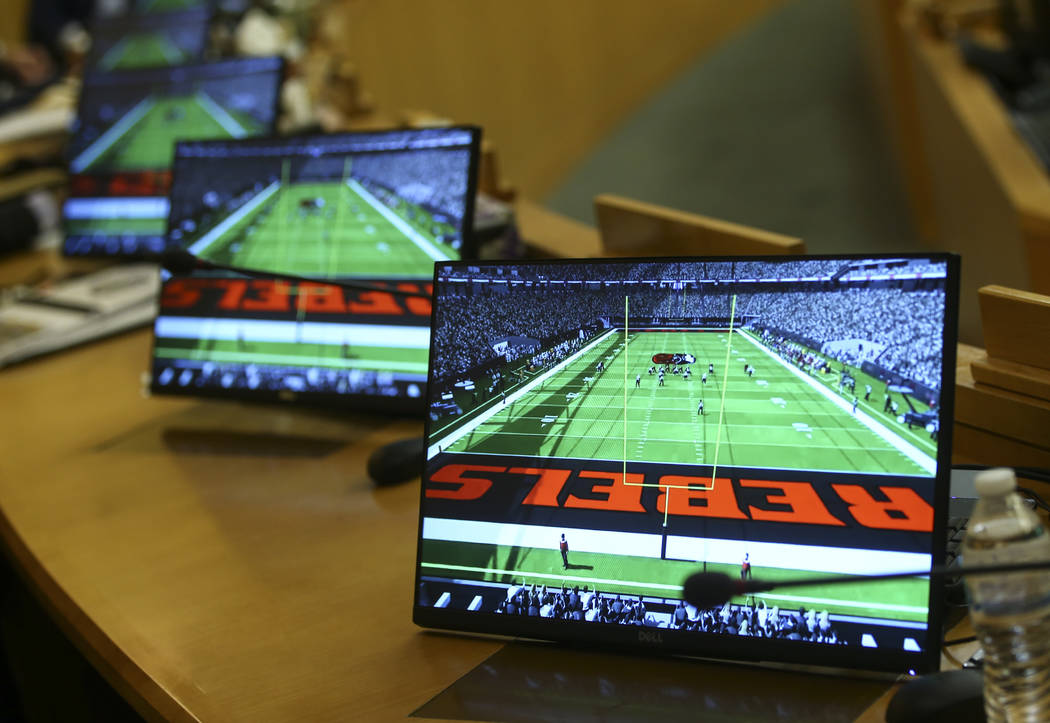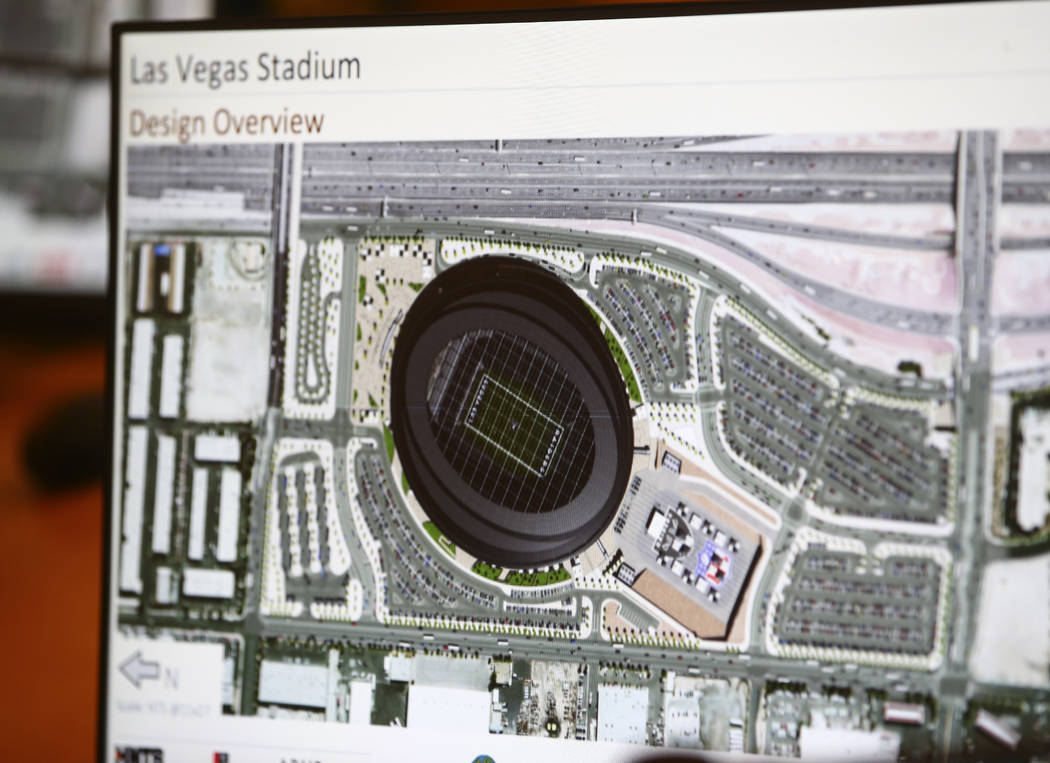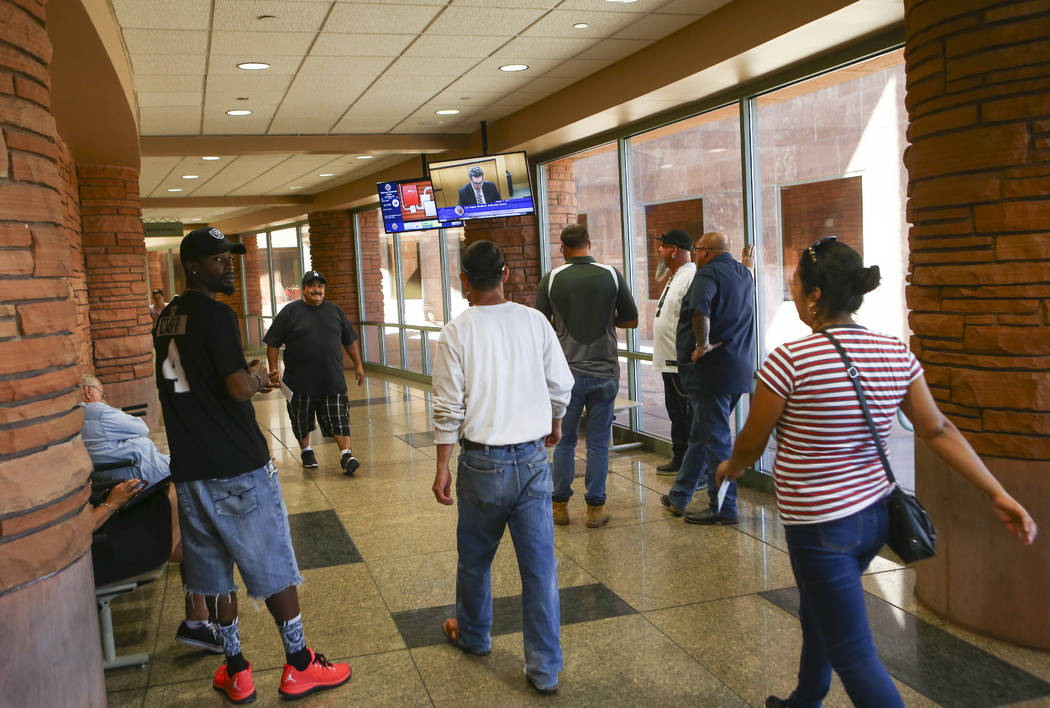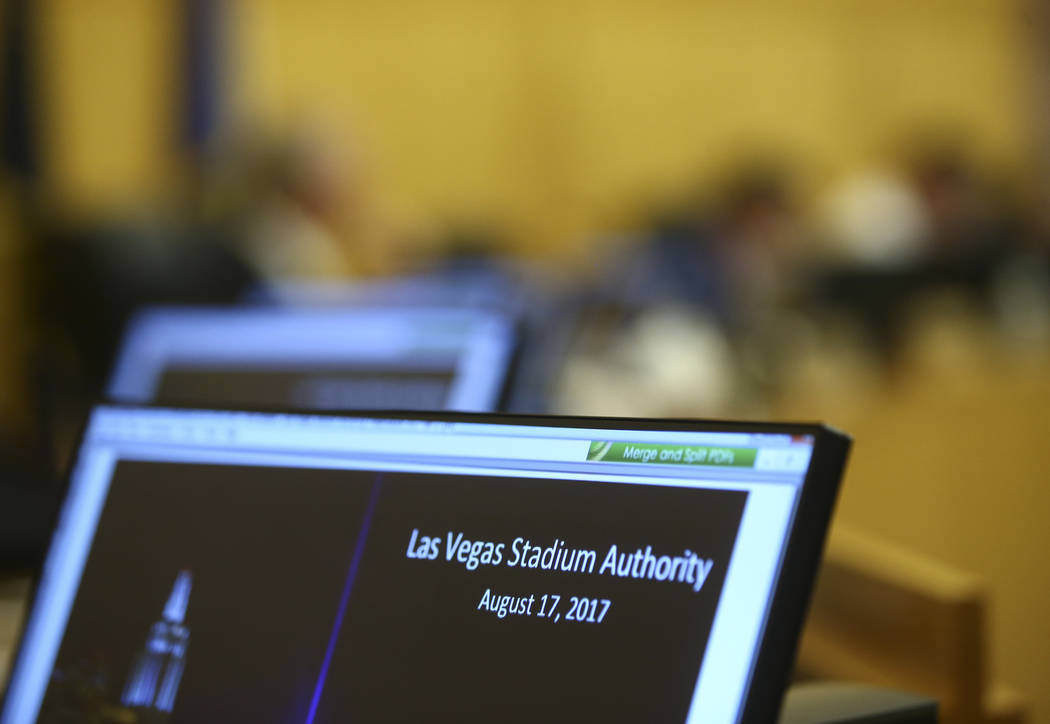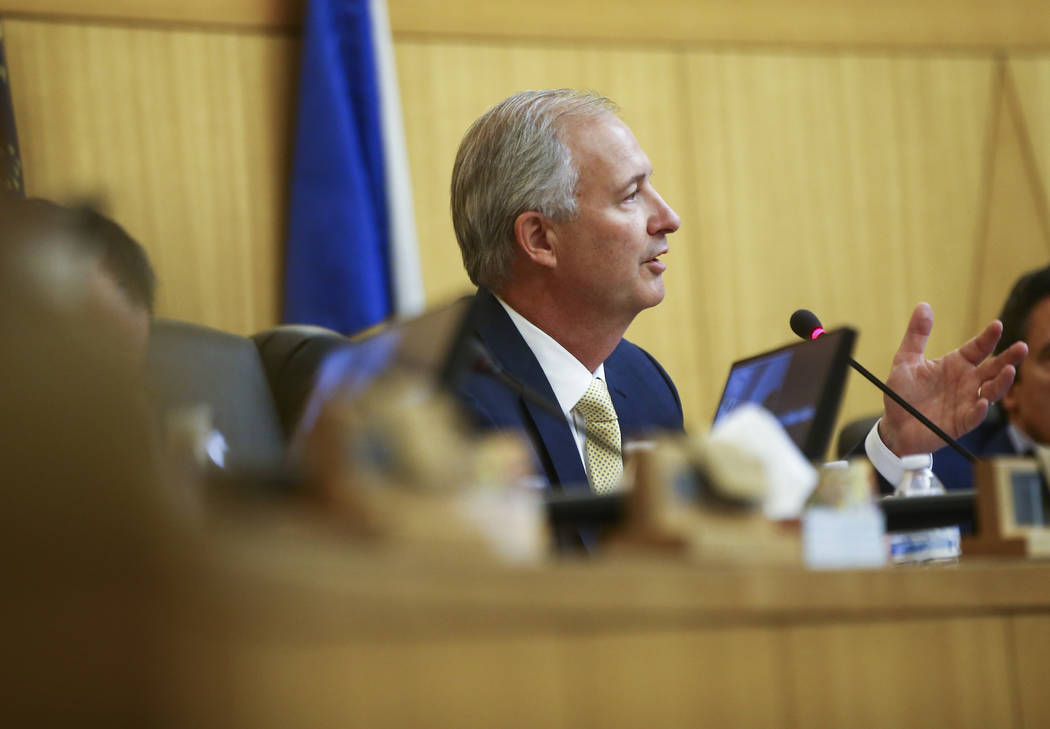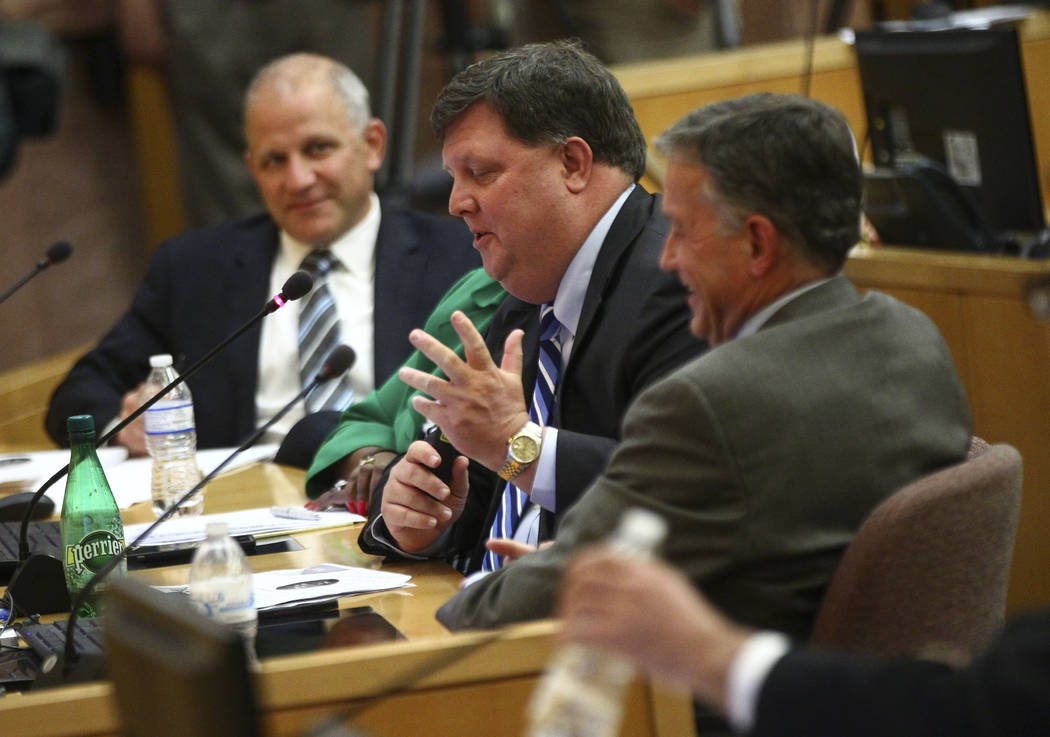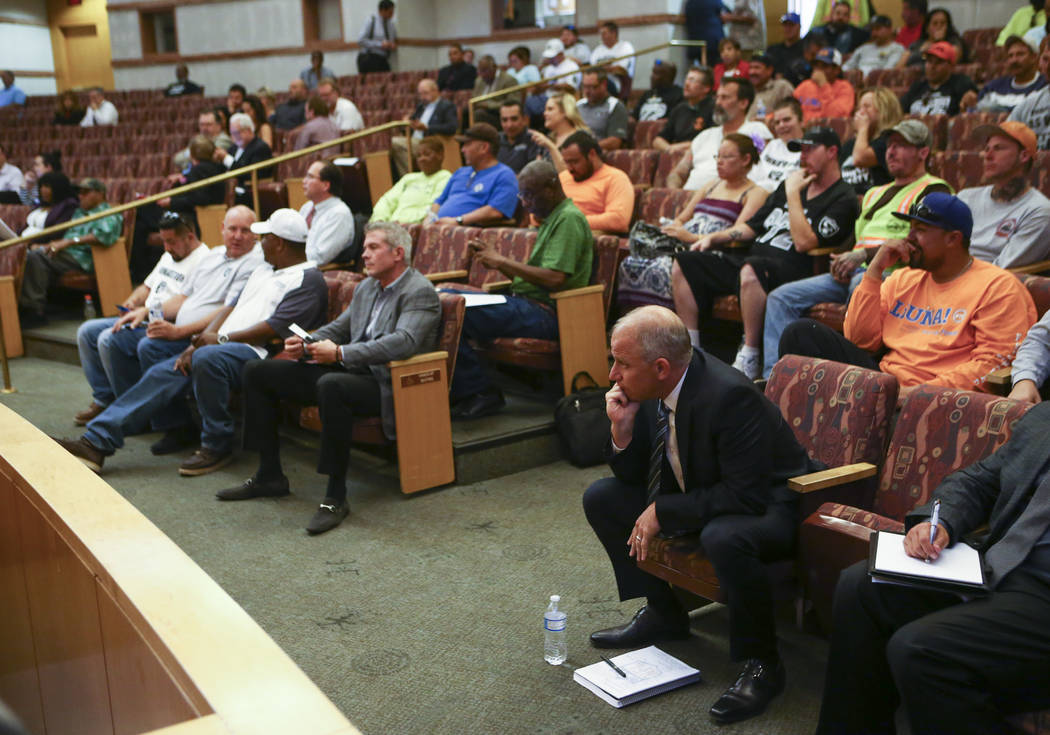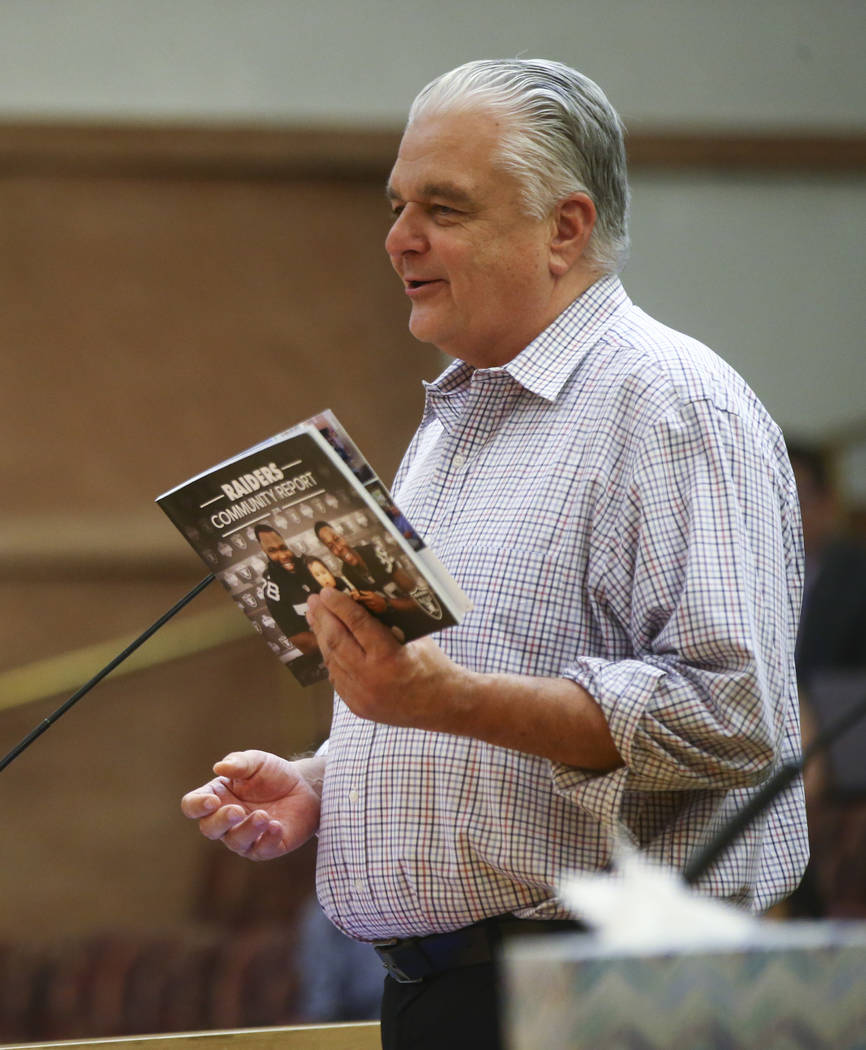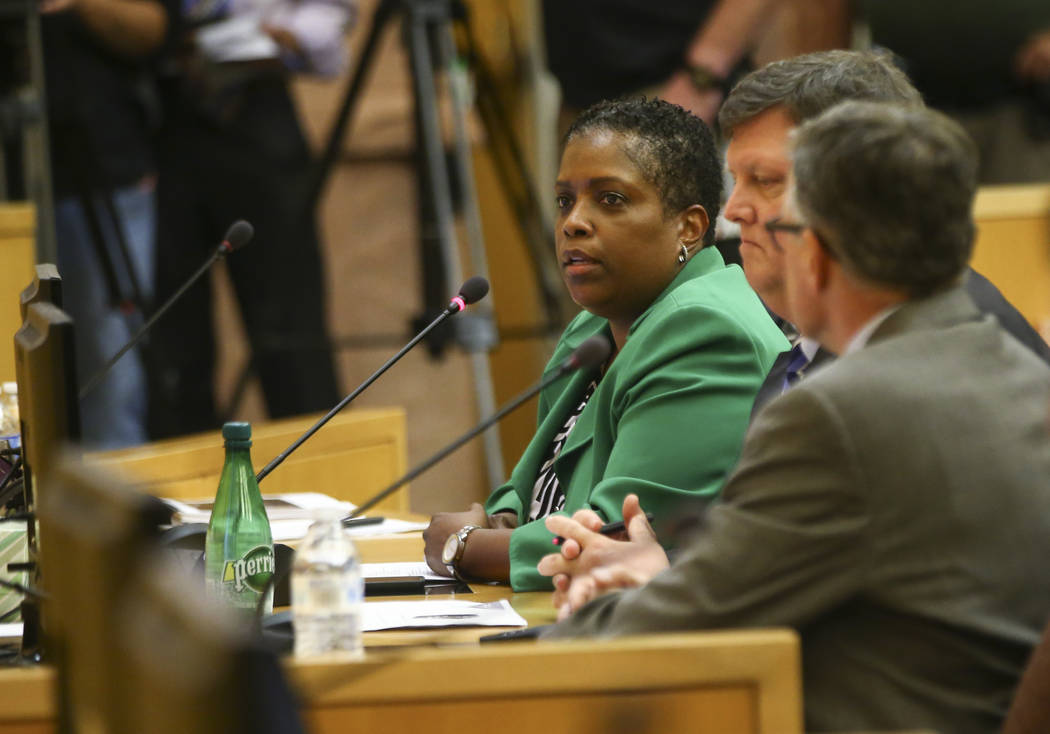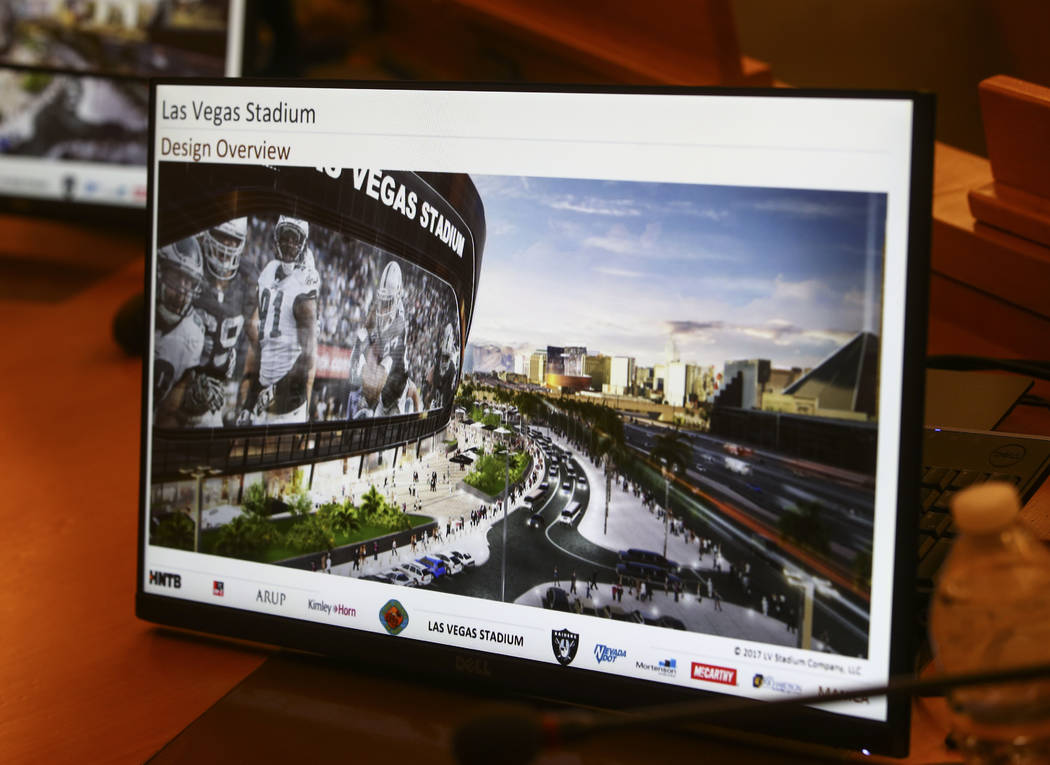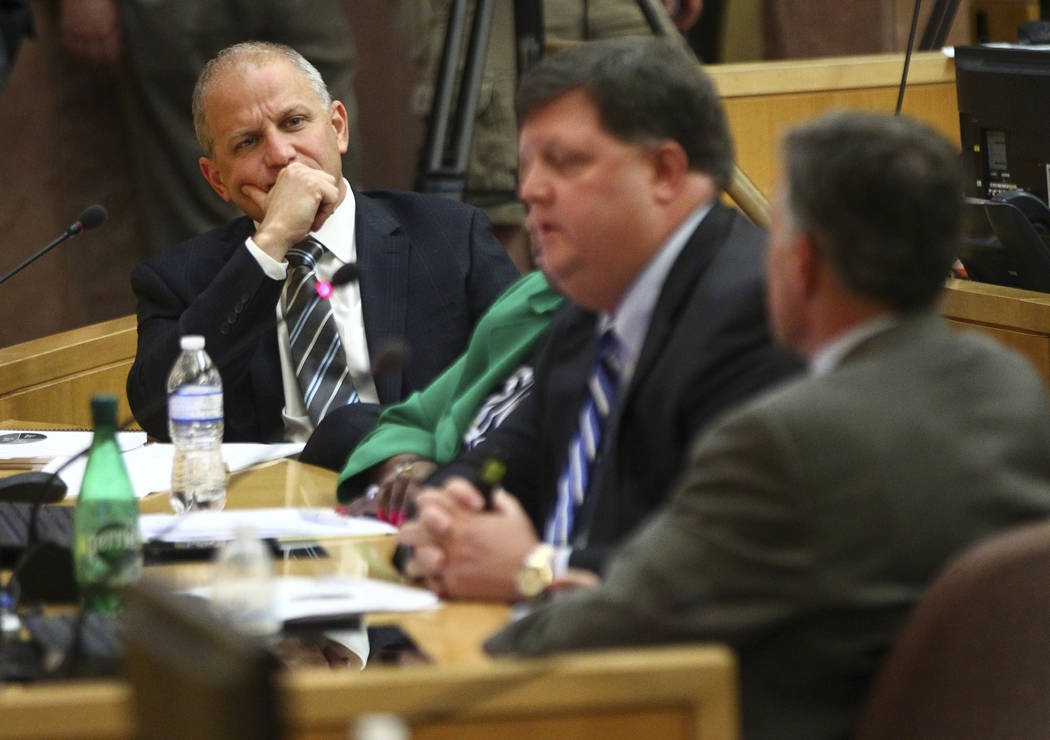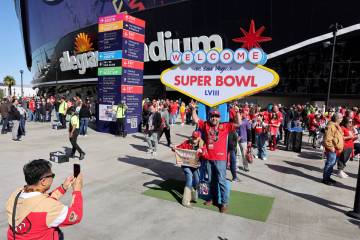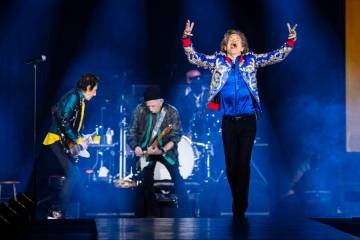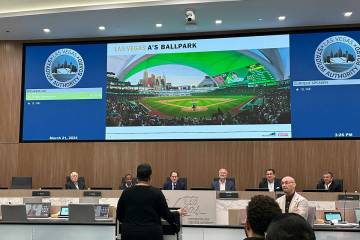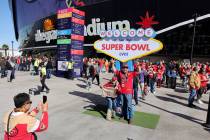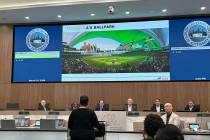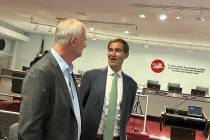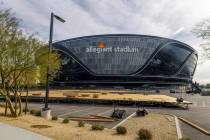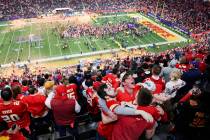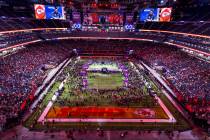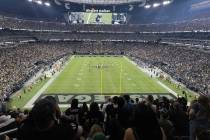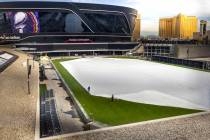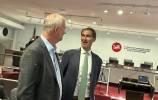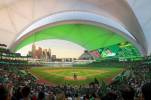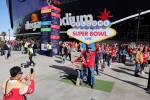Las Vegas Raiders Stadium to have see-through video wall
If Thursday’s Las Vegas Stadium Authority meeting were in a movie theater, it may have been labeled a long set of previews of coming attractions.
The nine-member board working with the Oakland Raiders to build a 65,000-seat, $1.9 billion domed football stadium for when the team relocates to Las Vegas in 2020 took three hours of testimony but made no progress on decisions. That sets the stage for approving several significant agreements when the group next meets on Sept. 14.
Board members got their first collective look at a financial package being negotiated by the Raiders with Bank of America that won’t be finalized until a guaranteed maximum price contract is signed.
Elliott McCabe, managing director of sports finance with Bank of America, told the board the package with the Raiders includes a $600 million loan for construction-related costs and up to $250 million generated through personal seat licenses with proceeds going toward the project.
McCabe said the Raiders have budgeted $1.8 billion for project costs and $100 million for a practice facility and team headquarters. That will be paid for with $750 million in public funding and $1.15 billion in private money.
McCabe said the bank’s negotiations with the team includes consideration of the Raiders’ $378 million relocation fee. McCabe and Bank of America have worked on NFL stadium projects across the country, which he said gives the bank a high level of confidence that the team will be able to meet its obligations.
Ahead of projections
Possibly the best financial news is that hotel room tax collections are running well ahead of the authority’s conservative estimates. After four months of collections, the tax has generated $17.1 million, 15.7 percent ahead of projections.
Steve Hill, chairman of the authority, said the additional revenue could be used to retire bonds earlier than planned or set aside for future capital expenses as the stadium ages.
Stadium construction consultant Don Webb, a principal and co-founder of California-based Cordell Corp., gave a summary of previously reported details about the stadium, giving additional insight to the rigid translucent roof. Unlike many domed stadiums, the roof won’t be retractable, but the north end will have an opening facing the Strip that should be visible from most fans inside.
Webb said the the roof will be made of a high-strength polymer that is lighter but more durable than glass. It will be supported by a steel cable system and air pressure from the stadium’s interior.
His one cautionary note about the roof: Construction officials are still mulling whether it would be advisable to use pyrotechnics outside that could damage the polymer surface.
Video wall
The stadium also will have a see-through video wall on the east side, facing Interstate 15. People on the concourses inside will be able to see through it, but those outside the building will see a video wall, a feature similar to a screen at T-Mobile Arena.
Just south of the building will be the sliding tray where a natural grass field will be grown outdoors and slid into the stadium for games, a feature insisted on by team owner Mark Davis. Webb said he expects it will be better than a similar operation at University of Phoenix Stadium in Glendale, Arizona, where the Cardinals play because designers will be able to improve on the Phoenix model, which has been in use for 11 years.
Webb repeated the three biggest issues of concern: keeping costs within budget, keeping construction on schedule — officials want to open the stadium in the summer of 2020 — and parking, an issue the team is exploring several options to solve.
There’s also some concern about cash flow in 2019 because the team doesn’t have a lease for a stadium that year. It will play in Oakland Alameda Coliseum this year and in 2018.
What’s next
While the authority board received updates on the project and financing, members got a glimpse of agreements that probably will come for approval next month:
■ A resolution that the team has demonstrated the financial wherewithal to undertake the stadium project.
■ The personal seat license agreement.
■ A non-relocation agreement that would create stiff penalties for the Raiders if the team attempts to leave Las Vegas before the end of its lease agreement.
■ An agreement with Bank of America that would enable it to collect stadium revenue if the Raiders default on their loan commitments.
■ A policy decision by the authority involving the retention of an owner’s representative or development compliance officer to keep the project on schedule.
■ The joint-use agreement between the Raiders and UNLV that would enable the Rebel football team to use the facility. That agreement could be delayed until October because the Board of Regents must review it before it can be submitted to the authority.
Contact Richard N. Velotta at rvelotta@reviewjournal.com or 702-477-3893. Follow @RickVelotta on Twitter.
Paying for the stadium
Elliott McCabe, managing director of sports finance with Bank of America, detailed revenue sources to build the planned Las Vegas stadium:
-$750 million in public funds, which will secure general obligation bonds through a 0.88 percentage-point increase in Clark County's tax on hotel and motel rooms.
-$600 million loan to the Raiders from Bank of America.
-$250 million through personal seat licenses paid for by fans purchasing season tickets.
-$200 million through the National Football League's G-4 program for stadium construction.
-$100 million in additional funding from the Raiders.



